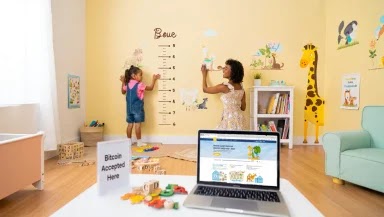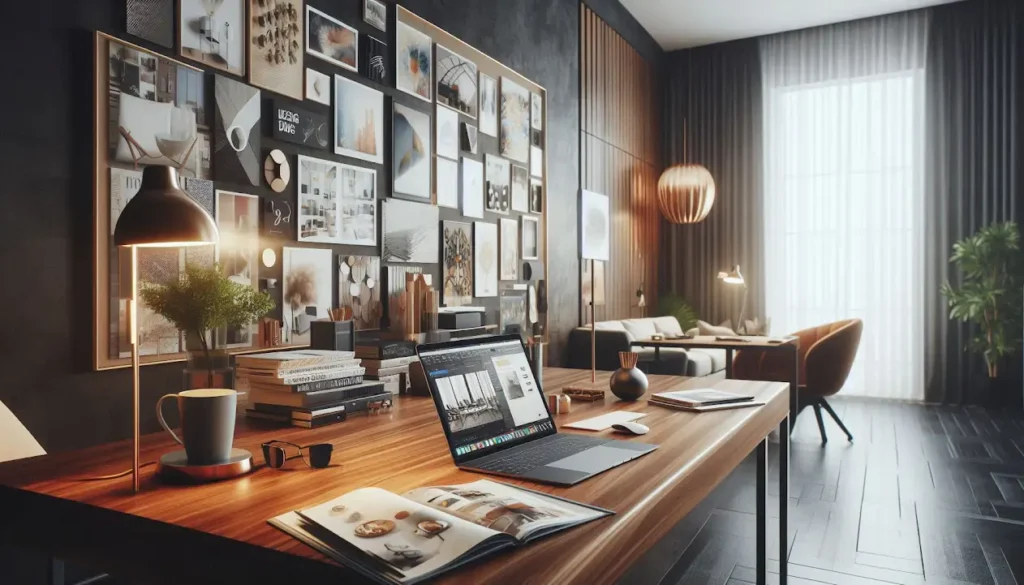The Evolution of Dubai’s Family-Focused Real Estate
Dubai’s residential landscape has undergone a remarkable transformation, shifting from predominantly investment-driven properties to family-centric homes that prioritize the needs of young residents. This evolution reflects the emirate’s maturing real estate market and its growing appeal to long-term expatriate families. Property developers and landlords increasingly recognize that accommodating children’s needs is no longer a luxury but a crucial factor in tenant decision-making. The emphasis on dedicated kids’ spaces has become particularly pronounced in premium residential areas such as Arabian Ranches, Emirates Hills, and Palm Jumeirah.
Recent market analysis reveals that properties featuring well-designed children’s rooms command rental premiums ranging from 15% to 25% higher than comparable units without such spaces. This trend has gained momentum as Dubai continues to attract global talent, many of whom relocate with families seeking comfortable, long-term residential solutions. The correlation between child-friendly home features and tenant retention rates demonstrates the strategic importance of this market segment.
The demographic composition of Dubai’s expatriate population plays a significant role in shaping these preferences. With over 40% of residents aged between 25 and 40, many are young professionals starting families or raising school-age children. This demographic reality has created a robust demand for homes that can accommodate growing families and provide dedicated spaces for children’s development.
Cultural factors also contribute to this trend, as both local Emirati and expatriate families place high value on spaces that support family life and children’s education. The concept of home as a nurturing environment for child development resonates strongly with Dubai’s diverse international community, influencing their housing choices and willingness to pay premium rents for suitable properties.
Smart Space Solutions: Designing Children’s Rooms in Dubai Homes
Modern architectural approaches in Dubai increasingly incorporate flexible design elements that can adapt to children’s changing needs as they grow. Innovative storage solutions, modular furniture, and multifunctional spaces characterize these child-centric designs. Architects and interior designers collaborate to create rooms that balance aesthetic appeal with practical functionality, ensuring these spaces remain relevant throughout different developmental stages.
Safety considerations play a paramount role in the design process, with features such as rounded corners, non-toxic materials, and childproof fixtures becoming standard elements. The integration of smart home technology adds another layer of safety and convenience, allowing parents to monitor their children’s spaces remotely. These technological additions often include temperature control, air quality monitoring, and automated lighting systems designed specifically for children’s comfort.
Sustainability has emerged as a key consideration in children’s room design, reflecting Dubai’s broader commitment to environmental consciousness. The use of eco-friendly materials, energy-efficient lighting, and natural ventilation systems appeals to environmentally aware parents while aligning with Dubai’s green building initiatives. These sustainable features often translate into long-term cost savings for tenants through reduced utility bills.
The psychological impact of well-designed children’s spaces cannot be understated. Research indicates that thoughtfully planned rooms can positively influence children’s cognitive development, creativity, and emotional well-being. This understanding has led to the incorporation of elements that stimulate learning and imagination, such as reading nooks, art corners, and adaptable play areas.
Investment Returns: The Financial Impact of Kid-Friendly Properties
Property owners who invest in creating high-quality children’s rooms often see significant returns on their investment through increased rental yields and property values. Market data suggests that such improvements can result in rental price increases of up to 20% compared to similar properties without dedicated children’s spaces. The initial investment in designing and furnishing these spaces typically ranges from AED 15,000 to AED 50,000, depending on the scope and quality of modifications.
Landlords report reduced vacancy periods for properties featuring well-designed children’s rooms, with some units being pre-leased before previous tenants vacate. This high demand often leads to longer lease terms, as families are more likely to renew their contracts to maintain stability for their children. The reduced tenant turnover translates into more stable rental income and lower marketing and maintenance costs.
Insurance companies have begun recognizing the value of child-safety features in residential properties, sometimes offering reduced premiums for homes with certified child-friendly modifications. This financial benefit adds another layer of return on investment for property owners who prioritize family-friendly features. The combination of higher rental yields and potential insurance savings makes these improvements increasingly attractive from an investment perspective.
Statistical analysis of rental trends in Dubai’s family-oriented communities shows that properties with dedicated children’s spaces maintain their value better during market fluctuations. This resilience can be attributed to the consistent demand from families seeking suitable housing options, regardless of broader market conditions.
Community Integration: The Role of Kid-Friendly Amenities
Dubai’s most successful residential communities integrate children’s needs beyond individual homes, creating comprehensive environments that support family life. These developments often feature carefully planned outdoor spaces, educational facilities, and recreational areas that complement in-home children’s rooms. The synergy between private and communal spaces enhances the overall appeal of properties to families with children.
Community developers have observed that properties near high-quality schools and childcare facilities command higher rental premiums, particularly when combined with well-designed children’s rooms. This proximity effect has led to increased investment in educational infrastructure within residential communities, creating self-contained family-friendly environments. The availability of these amenities often justifies higher rental rates and attracts long-term tenants.
Social interaction opportunities play a crucial role in community planning, with developers incorporating shared spaces that encourage children to socialize while maintaining safety and supervision. These common areas often include monitored playgrounds, indoor activity centers, and sports facilities designed specifically for younger residents. The presence of these amenities complements private children’s rooms and creates a more comprehensive living environment.
The success of these integrated communities has influenced urban planning policies in Dubai, with new developments required to allocate specific percentages of space to child-friendly amenities. This regulatory framework ensures that future residential projects continue to meet the needs of families while maintaining Dubai’s position as a premier destination for expatriate professionals with children.
Market Analysis: Dubai’s Competitive Edge in Family Housing
Comparative analysis with other global cities reveals Dubai’s unique position in offering high-quality family accommodation at relatively competitive prices. When factoring in the presence of dedicated children’s spaces, Dubai’s rental properties often provide better value for money compared to similar offerings in cities like Singapore, Hong Kong, or London. This competitive advantage has contributed to Dubai’s appeal as a destination for international families.
Recent market surveys indicate that 78% of families relocating to Dubai consider the presence of children’s rooms a critical factor in their housing decisions. This preference has led to a segmentation of the rental market, with family-friendly properties emerging as a distinct and premium category. The demand for such properties has remained stable even during periods of market volatility, suggesting the resilience of this market segment.
Dubai’s regulatory environment supports the development of family-friendly housing through building codes and safety standards specifically addressing children’s needs. These regulations provide a framework for property owners and developers to create spaces that meet international safety standards while maintaining aesthetic appeal. The clarity of these guidelines has facilitated investment in child-friendly property improvements.
Economic forecasts suggest continued growth in demand for family-oriented rental properties, driven by Dubai’s expanding role as a global business hub and its attraction of skilled professionals with families. This projected growth supports the business case for continued investment in children’s rooms and family-friendly features in rental properties.
Cultural Diversity: Meeting International Family Requirements
Dubai’s multicultural environment necessitates a nuanced approach to children’s room design that respects diverse cultural preferences while maintaining universal appeal. Property owners who successfully navigate these cultural considerations often achieve higher occupancy rates and tenant satisfaction levels. The ability to accommodate different cultural needs has become a valuable differentiator in Dubai’s competitive rental market.
Interior designers specializing in children’s spaces increasingly incorporate culturally adaptive elements that can be easily modified to suit tenants from different backgrounds. This flexibility extends to storage solutions, color schemes, and spatial arrangements that can be customized without major renovations. The adaptability of these spaces contributes to their long-term value and broader market appeal.
Religious and cultural considerations influence design choices in many cases, particularly regarding privacy features and room layouts. Understanding and accommodating these requirements has become an essential skill for property owners and managers serving Dubai’s diverse international community. The sensitivity to cultural preferences often results in stronger landlord-tenant relationships and higher lease renewal rates.
Market research indicates that properties offering culturally sensitive design features command higher rental premiums among specific demographic groups. This premium reflects the value that international tenants place on homes that can accommodate their cultural practices while providing modern amenities for their children.
Technological Integration: Smart Solutions for Modern Families
The integration of smart home technology in children’s rooms represents a growing trend in Dubai’s rental market. Advanced security systems, environmental controls, and interactive learning features appeal to tech-savvy parents seeking modern living spaces for their families. These technological additions often justify higher rental rates while providing tangible benefits to tenants.
Remote monitoring capabilities have become increasingly important to working parents, with smart room features allowing them to check on their children’s activities and environment from anywhere. Property owners who invest in these technologies report increased interest from corporate tenants and professional families. The presence of these features often influences rental decisions and lease duration.
Energy management systems specifically designed for children’s spaces help families control utility costs while maintaining optimal comfort levels. These smart solutions include automated lighting, climate control, and air quality monitoring systems that can be customized to individual preferences. The potential for cost savings through efficient energy use adds value to properties equipped with these technologies.
The future-proofing aspect of technologically enhanced children’s rooms appeals to both landlords and tenants. The ability to upgrade and adapt these systems ensures that properties remain competitive in Dubai’s evolving real estate market. Investment in scalable technology infrastructure has become a key consideration for property owners planning long-term asset management strategies.



